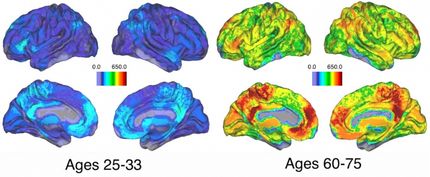The criminal prototype
What is the difference between the brains of criminals and non-criminals?
Advertisement
Professor Boris Schiffer has been examining a very unusual type of person: namely people who draw attention to themselves even as early as childhood due to delinquent behaviour. Often, they are in conflict with the law again and again throughout their lives. In cases such as these, experts like Schiffer, director of the research department for forensic psychiatry and psychotherapy at the LWL University Hospital Bochum and the LWL Forensic Psychiatric Hospital Herne, diagnose dissocial personality disorder. By deploying imaging tools, he investigated whether and how the brains of criminal offenders differ from others. Rubin, the science magazine of Ruhr-Universität Bochum, features an article on his work.

People with dissocial personality disorder do not care about the welfare and well-being of others (symbolic image).
pixabay.com
No moral compass to realign
Approximately five per cent of men and about one per cent of women have the disposition for the disorder. “That’s a lot of people, of course, but not all of them become delinquents,” stresses Boris Schiffer. A number of other factors pave the way for a criminal career. For example, the average intelligence quotient of prisoners with dissocial personality disorder is ten points below the population average. More often than not, they have a substance use disorder. Since the dissocial personality disorder alone doesn’t affect the culpability of the perpetrators, they serve time in normal correctional institutions. Prior to their release, they are assessed by experts to determine how likely they are to reoffend. “The prognosis is poor,” says Schiffer. “This type of offender is difficult to treat, because there is actually no moral compass to realign.”
His research explores whether any objective criteria for dangerousness might exist. It focuses on the question which neurobiological mechanisms underlie the behaviour of criminals. Is it possible to read from the brain or its activity where the differences lie compared to non-offenders, or how recidivists differ from non-recidivists? Is it possible to tell whether a therapy is having an effect? “If this were the case, we would have an objective criterion for assessing whether a therapy was successful,” points out Schiffer.
In order to understand dissocial personality disorder and its effects in greater detail, he employed functional magnetic resonance imaging, or fMRI for short. The RUB researchers developed an experimental design where test participants in the fMRI were each shown short image sequences in which the perpetrator and the victim interacted. Prior to this, the participants were instructed to put themselves in the shoes of either one or the other person. Afterwards, the participants were asked how they felt and how they assessed the feelings of the observed persons. While the evaluation of the studies is not yet complete, they showed, among other things, that dissocial personalities do empathise – but with the perpetrator rather than with the victim.























































